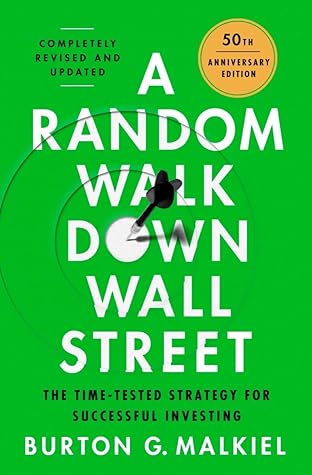More on this book
Community
Kindle Notes & Highlights
Read between
March 7 - March 12, 2025
A random walk is one in which future steps or directions cannot be predicted on the basis of past history.
A successful investor is generally a well-rounded individual who puts a natural curiosity and an intellectual interest to work.
The successful investor tries to beat the gun by estimating what investment situations are most susceptible to public castle-building and then buying before the crowd.
The key to investing is not how much an industry will affect society or even how much it will grow, but rather its ability to make and sustain profits.
The clear lesson of history is that eventually all excessively exuberant markets succumb to the laws of gravity.
Do not confuse gambling with investing, and never commit your retirement savings to some currently popular technologies that promise to transform the world.
The ability to avoid horrendous investing mistakes is probably the most important factor in preserving one’s capital and allowing it to grow.
Rule 1: A rational investor should be willing to pay a higher price for a share the larger the growth rate of dividends and earnings.
The higher the dividend payout, other things equal, the greater the value of the stock.
Rule 2: A rational investor should pay a higher price for a share, other things equal, the larger the proportion of a company’s earnings paid out in cash dividends or used to buy back stock.
Rule 3: A rational (and risk-averse) investor should pay a higher price for a share, other things equal, the less risky the company’s stock.
Rule 4: A rational investor should pay a higher price for a share, other things equal, the lower the interest rates.
As Samuel Goldwyn used to say, “Forecasts are difficult to make—particularly those about the future.”
The point is that market timers risk missing the infrequent large sprints that are the big contributors to performance.
The implications are simple. If past prices contain little or no useful information for predicting future prices, there is no point in following technical trading rules.
The point is that we should not take for granted the reliability and accuracy of any judge, no matter how expert.
As Keynes put it, “Worldly wisdom teaches that it is better for reputation to fail conventionally than to succeed unconventionally.”
Investment risk, then, is the chance that expected security returns will not materialize and, in particular, that the securities you hold will fall in price.
Thus, the beta measure of relative volatility does capture at least some aspects of what we normally think of as risk. And portfolio betas from the past do a reasonably good job of predicting relative volatility in the future.
First and foremost, many individual investors are mistakenly convinced that they can beat the market. As a result, they speculate more than they should and trade too much.
Extreme loss aversion helps explain sellers’ reluctance to sell their properties at a loss.
The findings were surprising. Sophisticated speculators such as hedge funds were not a correcting force during the bubble period. They actually helped inflate the bubble by riding it rather than attacking it.
Odean’s advice to investors: If you are contemplating making a stock trade (and you are married), ask your wife whether you should do it.
A “paper loss” is just as real as a realized loss. The decision not to sell is exactly the same as the decision to buy the stock at the current price.
In investing money, the amount of interest you want should depend on whether you want to eat well or sleep well. —J. Kenfield Morley, Some Things I Believe
Remember Murphy’s Law: What can go wrong will go wrong. And don’t forget O’Toole’s commentary: Murphy was an optimist. Bad things do happen to good people.
The cash reserve fund should be larger, the older you are, but could be smaller if you work in an in-demand profession and/or if you have large investable assets.
Remember the overarching rule for achieving financial security: keep it simple. Avoid any complex financial products as well as the hungry agents who try to sell them to you.
High investment rewards can only be achieved by accepting substantial risk. Finding your sleeping point is one of the most important investment steps you must take.
Finally, I would avoid cryptocurrencies, non-fungible tokens, or whatever else has attracted the attention of the social networks. These are for gamblers. They do not belong in retirement portfolios.
The point is not to invest with a rearview mirror projecting double-digit returns from the past into the future. We are likely to be in a low-return environment for some time to come.
There are two times in a man’s life when he should not speculate: when he can’t afford it, and when he can. —Mark Twain, Following the Equator
But this return came only at substantial risk to investors. Total returns were negative in about three years out of ten. So as you reach for higher returns, never forget the saying “There ain’t no such thing as a free lunch.” Higher risk is the price one pays for more generous returns.
The longer the time period over which you can hold on to your investments, the greater should be the share of common stocks in your portfolio.
Rule 1: Confine stock purchases to companies that appear able to sustain above-average earnings growth for at least five years.
Rule 2: Never pay more for a stock than can reasonably be justified by a firm foundation of value.
Rule 3: It helps to buy stocks with the kinds of stories of anticipated growth on which investors can build castles in the air.
Rule 4: Trade as little as possible.


